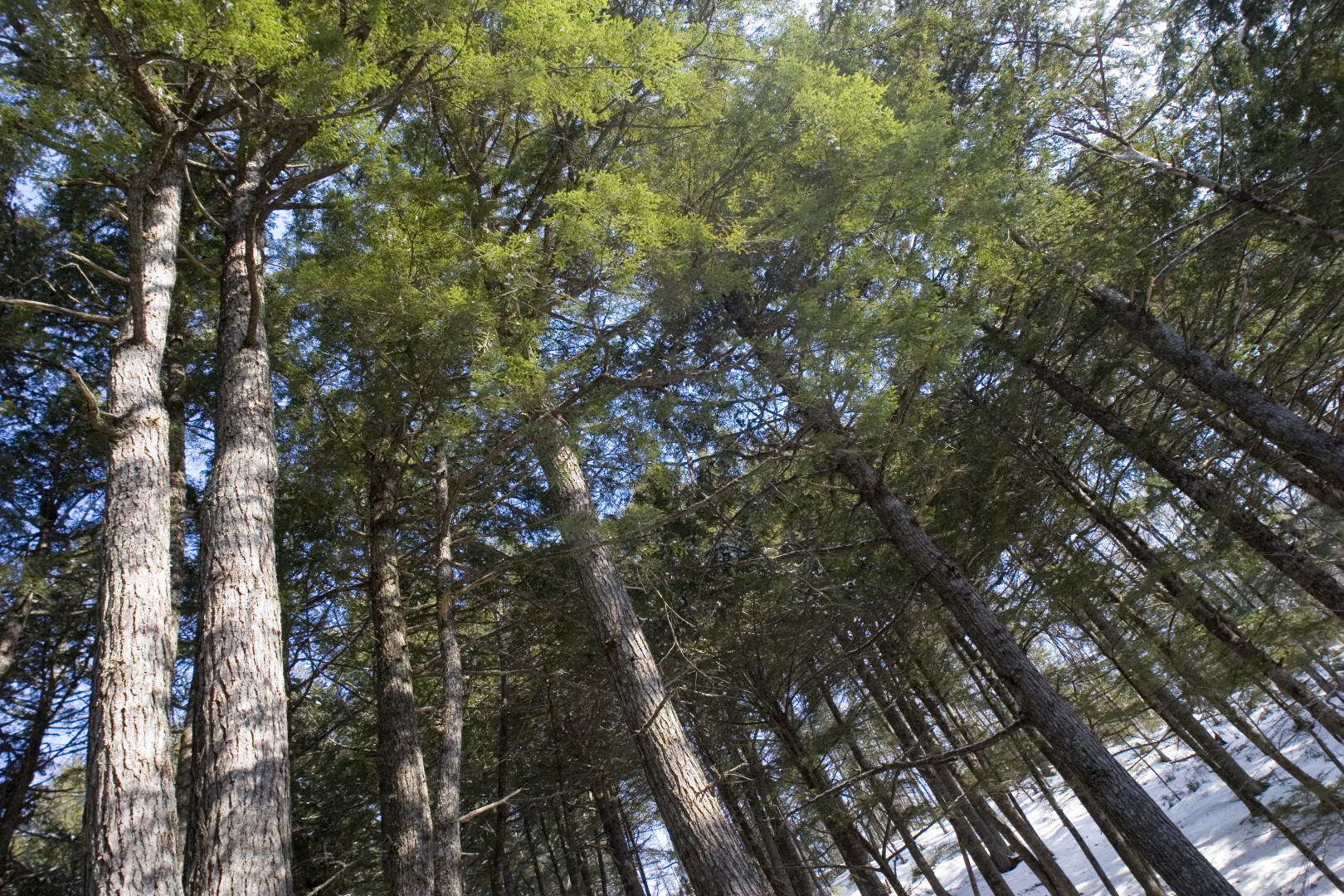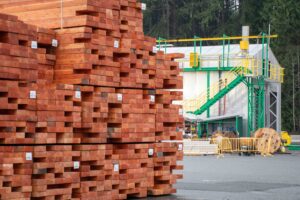 Shortly after Prime Minister Carney’s announcement of $500-million to help Canada’s softwood-lumber industry decrease its reliance on the hostile US market, BC’s Forestry Minister offered a modest target of 10%. …History suggests, however, that even that degree of market diversification stands to be an uphill battle. …While there have been modest inroads in China and Japan, diversification has mostly proved quixotic − partly because the proximity of the massive US housing market, for which there is not enough lumber harvested stateside to serve, has been a disincentive to reach further….Rick Doman, chair BC’s Forestry Innovation Investment board − mentioned South Korea, Vietnam, India, Australia, Britain. …Canada Wood Group president Bruce St. John describe it as a painstaking process involving promotional efforts, direct engagement with local governments on building codes and standards, and expertise-building for industry. …To succeed, particularly amid growing softwood-export competition from Europe especially, will require steady focus through and perhaps beyond the Trump era. [to access the full story a Globe & Mail subscription is required]
Shortly after Prime Minister Carney’s announcement of $500-million to help Canada’s softwood-lumber industry decrease its reliance on the hostile US market, BC’s Forestry Minister offered a modest target of 10%. …History suggests, however, that even that degree of market diversification stands to be an uphill battle. …While there have been modest inroads in China and Japan, diversification has mostly proved quixotic − partly because the proximity of the massive US housing market, for which there is not enough lumber harvested stateside to serve, has been a disincentive to reach further….Rick Doman, chair BC’s Forestry Innovation Investment board − mentioned South Korea, Vietnam, India, Australia, Britain. …Canada Wood Group president Bruce St. John describe it as a painstaking process involving promotional efforts, direct engagement with local governments on building codes and standards, and expertise-building for industry. …To succeed, particularly amid growing softwood-export competition from Europe especially, will require steady focus through and perhaps beyond the Trump era. [to access the full story a Globe & Mail subscription is required]


 VANCOUVER ISLAND — Over 3 months later, 105 forestry workers are still on the picket lines this week after walking off the job June 6, and it doesn’t look like they expect to be going back to work anytime soon. …“I didn’t think we’d get to this point,” said United Steelworkers’ Jason Cox. …The union says the company wants to contract out jobs but La-kwa sa muqw Forestry says that’s not the case, it just wants to give new employees the choice. Operations manager Greg DeMille said, “They are demanding that we agree to mandatory union certification. And so with that and the fact we can’t agree to that because we feel it impacts employee’s rights to choose and has an impact to First Nations rights to free, prior and informed consent. …The union says it respects First Nation rights but insists this should be considered a “normal labour dispute” and nothing else.
VANCOUVER ISLAND — Over 3 months later, 105 forestry workers are still on the picket lines this week after walking off the job June 6, and it doesn’t look like they expect to be going back to work anytime soon. …“I didn’t think we’d get to this point,” said United Steelworkers’ Jason Cox. …The union says the company wants to contract out jobs but La-kwa sa muqw Forestry says that’s not the case, it just wants to give new employees the choice. Operations manager Greg DeMille said, “They are demanding that we agree to mandatory union certification. And so with that and the fact we can’t agree to that because we feel it impacts employee’s rights to choose and has an impact to First Nations rights to free, prior and informed consent. …The union says it respects First Nation rights but insists this should be considered a “normal labour dispute” and nothing else. 
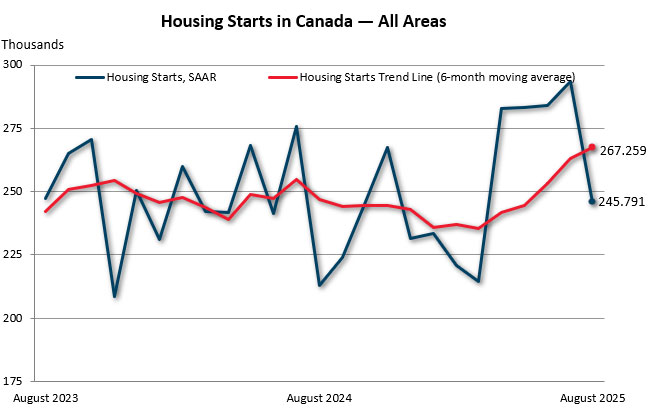
 Canada’s annual inflation rate rose to 1.9% in August, Statistics Canada said on Tuesday, the final piece of economic data to be released before the Bank of Canada’s next interest rate decision. The higher rate was largely expected. Gas prices, which dropped at a rate of more than 16% in July, were still declining in August — but at a slower pace than they had previously, contributing to the upward tick in the overall inflation rate. …With gas stripped away from the overall inflation rate, the numbers mostly ticked down in August. Economists anticipate that the central bank will cut rates by 25 basis points during its Wednesday meeting — which would mark the bank’s first cut since March. “This report was mostly a low-drama affair,” wrote Douglas Porter, chief economist at BMO, in a note to clients. The pace of price growth “won’t cause the Bank of Canada much stress,” Porter wrote.
Canada’s annual inflation rate rose to 1.9% in August, Statistics Canada said on Tuesday, the final piece of economic data to be released before the Bank of Canada’s next interest rate decision. The higher rate was largely expected. Gas prices, which dropped at a rate of more than 16% in July, were still declining in August — but at a slower pace than they had previously, contributing to the upward tick in the overall inflation rate. …With gas stripped away from the overall inflation rate, the numbers mostly ticked down in August. Economists anticipate that the central bank will cut rates by 25 basis points during its Wednesday meeting — which would mark the bank’s first cut since March. “This report was mostly a low-drama affair,” wrote Douglas Porter, chief economist at BMO, in a note to clients. The pace of price growth “won’t cause the Bank of Canada much stress,” Porter wrote.
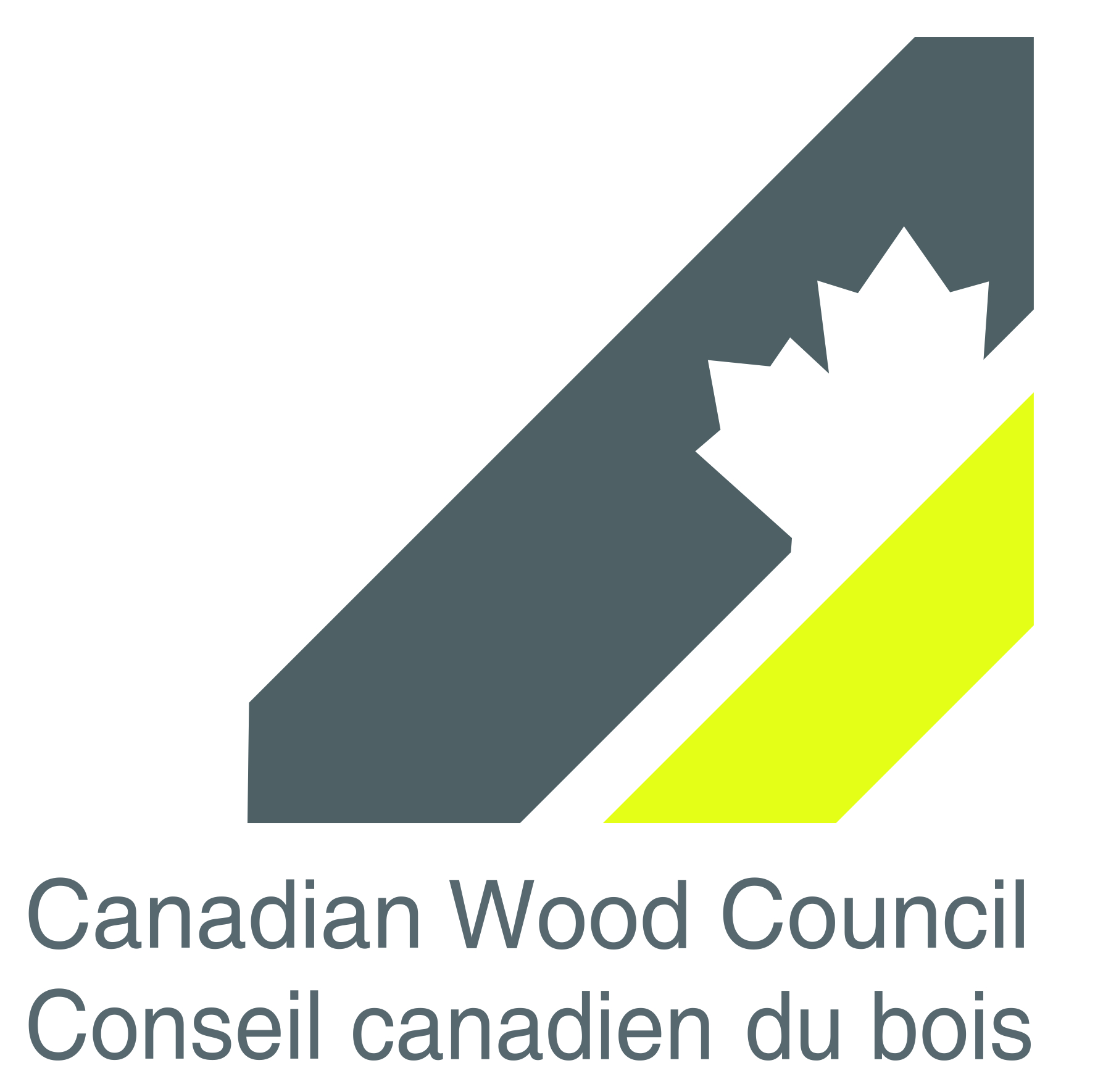 The Canadian Wood Council (CWC) welcomes
The Canadian Wood Council (CWC) welcomes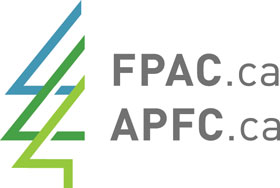 Forest Products Association of Canada (FPAC) welcomes
Forest Products Association of Canada (FPAC) welcomes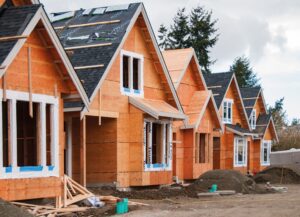 Prime Minister Mark Carney announced Sunday afternoon the launch of Build Canada Homes, the federal government’s new agency that will oversee federal housing programs. The agency was part of the Liberals’ election promise to double housing construction. The government is touting Build Canada Homes as a centralized agency to oversee new affordable housing programs initiated at the federal level. Carney said the agency will “supercharge housing construction across Canada” by helping to build supportive and transitional housing in collaboration with provinces, territories and Indigenous communities. It will also expand “deeply affordable and community housing” and partner with private developers to build homes for the middle class. The prime minister also announced that former Toronto city councillor Ana Bailão will be the CEO of Build Canada Homes. …Carney said $13 billion is earmarked for the new agency.
Prime Minister Mark Carney announced Sunday afternoon the launch of Build Canada Homes, the federal government’s new agency that will oversee federal housing programs. The agency was part of the Liberals’ election promise to double housing construction. The government is touting Build Canada Homes as a centralized agency to oversee new affordable housing programs initiated at the federal level. Carney said the agency will “supercharge housing construction across Canada” by helping to build supportive and transitional housing in collaboration with provinces, territories and Indigenous communities. It will also expand “deeply affordable and community housing” and partner with private developers to build homes for the middle class. The prime minister also announced that former Toronto city councillor Ana Bailão will be the CEO of Build Canada Homes. …Carney said $13 billion is earmarked for the new agency.
 This summer, five exceptional students from across Canada were selected for the Forest Products Association of Canada’s (FPAC) 2025 Green Dream Internship Program, an initiative that continues to spotlight the next generation of forestry professionals. Now in its twelfth year, the Green Dream Internship offers students a unique opportunity to explore the forest sector from the inside out. Over six weeks, interns shared their experiences through creative storytelling—capturing everyday moments in forest operations, conducting interviews, and reflecting on their career journeys. Each intern received a $1,000 scholarship to support their studies. “As these students return to their studies and continue building their expertise, they now carry with them an even deeper understanding of the sector’s challenges, innovations, and opportunities,” said Derek Nighbor, FPAC’s President and CEO.
This summer, five exceptional students from across Canada were selected for the Forest Products Association of Canada’s (FPAC) 2025 Green Dream Internship Program, an initiative that continues to spotlight the next generation of forestry professionals. Now in its twelfth year, the Green Dream Internship offers students a unique opportunity to explore the forest sector from the inside out. Over six weeks, interns shared their experiences through creative storytelling—capturing everyday moments in forest operations, conducting interviews, and reflecting on their career journeys. Each intern received a $1,000 scholarship to support their studies. “As these students return to their studies and continue building their expertise, they now carry with them an even deeper understanding of the sector’s challenges, innovations, and opportunities,” said Derek Nighbor, FPAC’s President and CEO. 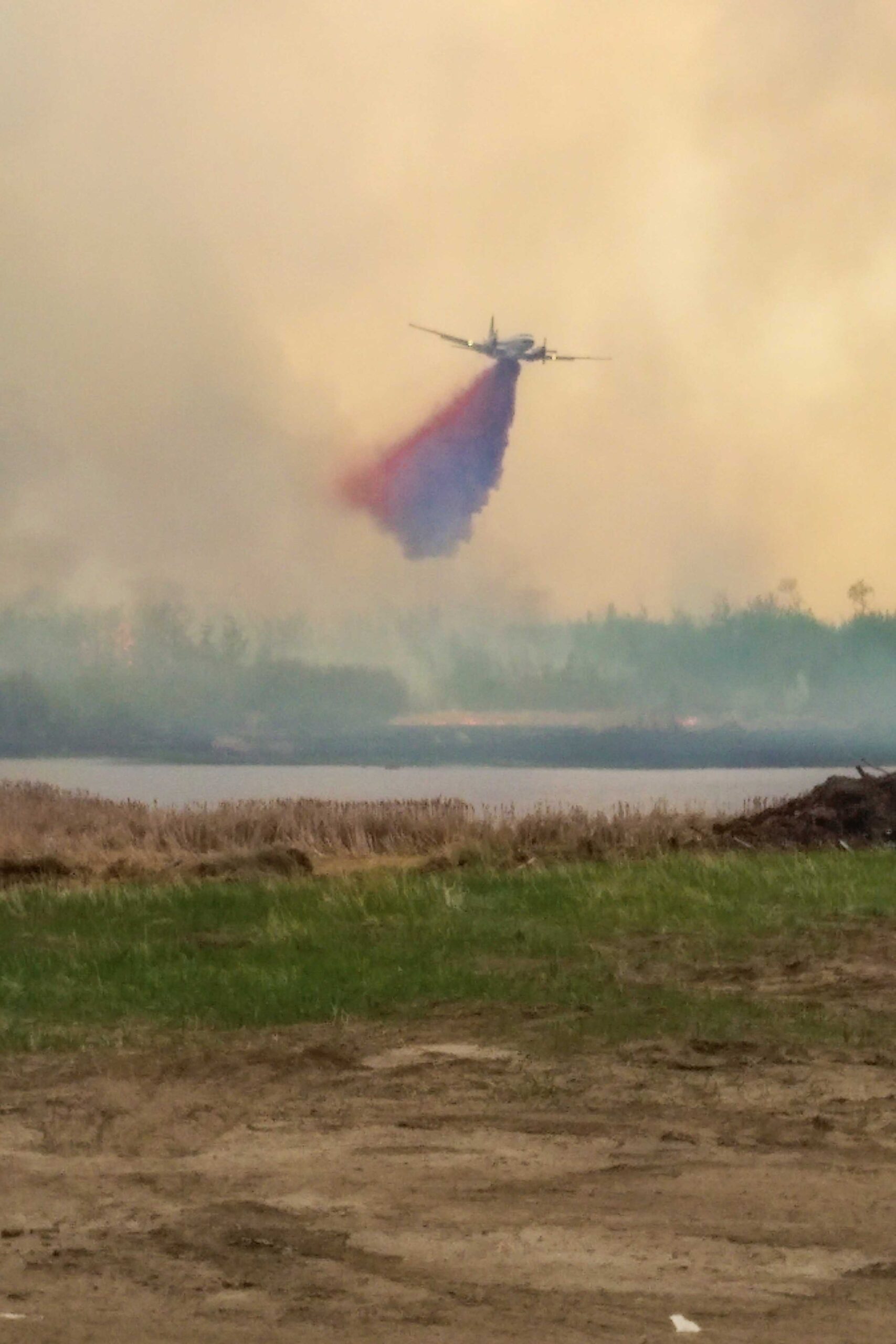 Dropping fire retardant solutions from planes is a crucial strategy in wildfire fighting, but some experts are concerned about their impact on the environment, including aquatic ecosystems. Once dropped, these retardants leave a rust-coloured or pinkish liquid coating on roads, roofs, and vegetation. This technique, commonly used since the mid 20th century, helps fire crews contain blazes by depriving flames of oxygen, explains Jen Baron, a postdoctoral researcher at the University of British Columbia’s Centre for Wildfire Coexistence. Since 2009, the B.C. Wildfire Service has relied on Phos-Chek LC-95A, a widely used retardant from Perimeter Solutions… Its main ingredient, ammonium polyphosphate, is a common fertilizer. Additives, like iron oxide, give the retardant its signature red colour, helping crews to see where it has been dropped. …Uldis Silins, a professor of forest hydrology at the University of Alberta says studying retardants like Phos-Chek remains crucial, especially because their specific chemical composition is proprietary and therefore unknown.
Dropping fire retardant solutions from planes is a crucial strategy in wildfire fighting, but some experts are concerned about their impact on the environment, including aquatic ecosystems. Once dropped, these retardants leave a rust-coloured or pinkish liquid coating on roads, roofs, and vegetation. This technique, commonly used since the mid 20th century, helps fire crews contain blazes by depriving flames of oxygen, explains Jen Baron, a postdoctoral researcher at the University of British Columbia’s Centre for Wildfire Coexistence. Since 2009, the B.C. Wildfire Service has relied on Phos-Chek LC-95A, a widely used retardant from Perimeter Solutions… Its main ingredient, ammonium polyphosphate, is a common fertilizer. Additives, like iron oxide, give the retardant its signature red colour, helping crews to see where it has been dropped. …Uldis Silins, a professor of forest hydrology at the University of Alberta says studying retardants like Phos-Chek remains crucial, especially because their specific chemical composition is proprietary and therefore unknown. 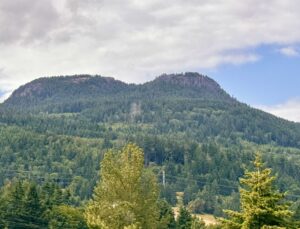 First Nations in the North Cowichan region on Vancouver Island say a motion by the municipality is undermining collaborative efforts on the future of logging in the region’s forest reserve. …Cindy Daniels, chief of Cowichan Tribes, said the move by the council “undermines the collaborative nature” of work to date on a joint plan for the forest. …The North Cowichan council has been in discussions for a collaborative framework with Quw’utsun Nation since 2021 and announced a commitment to establish a co-management strategy for the forest reserve in April 2024. …Gary Merkel, director of the Centre for Indigenous Land Stewardship at UBC…. “It’s a little bit ahead of itself that motion, but not too far. I mean, they haven’t said ‘we’re just going to go and log,’ they’ve allowed the possibility”. …”We are going to get a staff report outlining some of the implications and next steps,” North Cowichan Mayor Rob Douglas said.
First Nations in the North Cowichan region on Vancouver Island say a motion by the municipality is undermining collaborative efforts on the future of logging in the region’s forest reserve. …Cindy Daniels, chief of Cowichan Tribes, said the move by the council “undermines the collaborative nature” of work to date on a joint plan for the forest. …The North Cowichan council has been in discussions for a collaborative framework with Quw’utsun Nation since 2021 and announced a commitment to establish a co-management strategy for the forest reserve in April 2024. …Gary Merkel, director of the Centre for Indigenous Land Stewardship at UBC…. “It’s a little bit ahead of itself that motion, but not too far. I mean, they haven’t said ‘we’re just going to go and log,’ they’ve allowed the possibility”. …”We are going to get a staff report outlining some of the implications and next steps,” North Cowichan Mayor Rob Douglas said.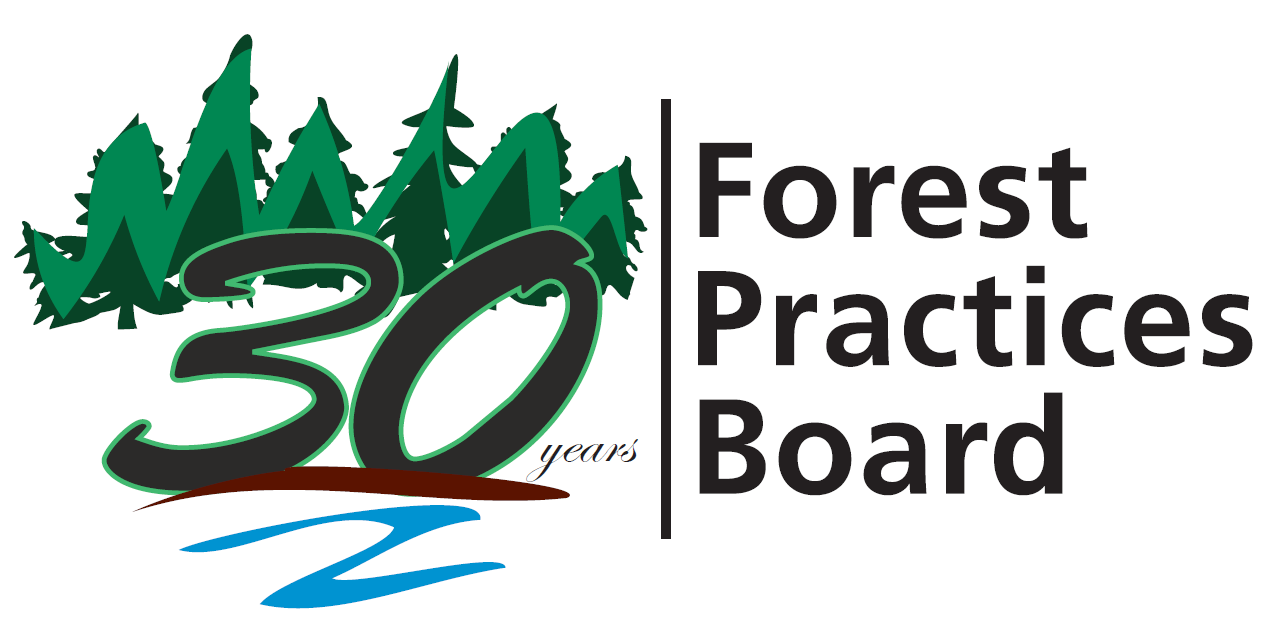
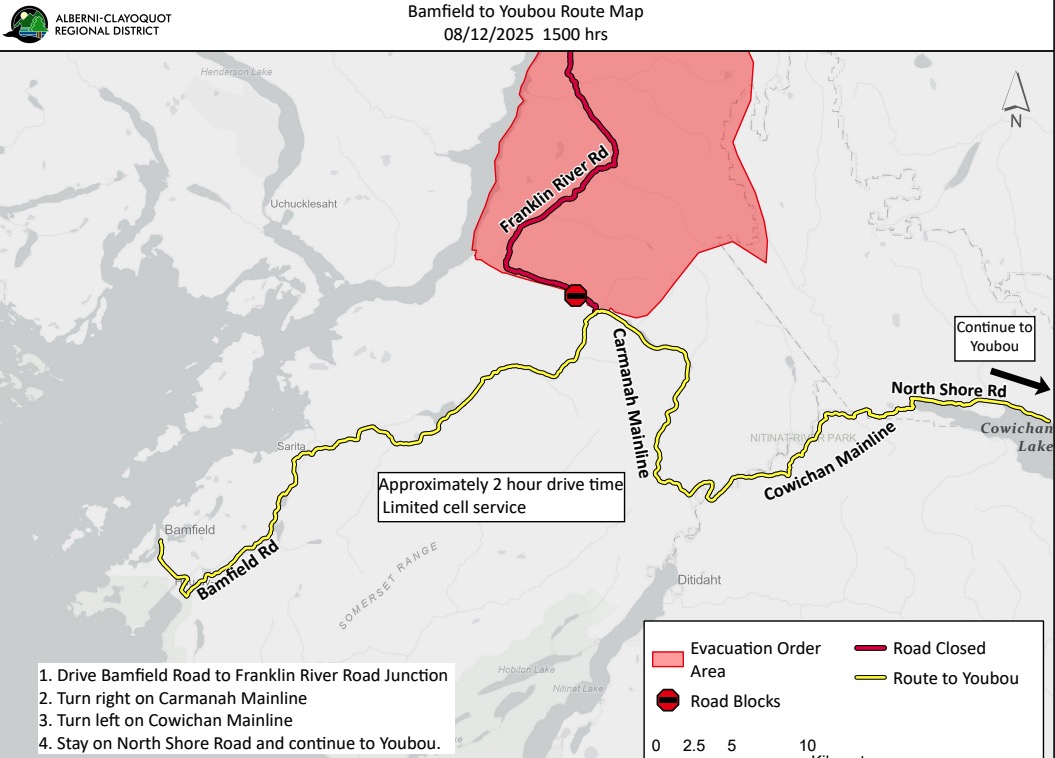 The fire-ravaged Bamfield Main Road, which connects Bamfield and several First Nation communities to Port Alberni, will reopen by the end of October, the Transportation Ministry announced. The ministry said temporary closures could still occur, however, during periods of heavy rain and strong winds. It said a geotechnical assessment to identify hazards, and assessments of the stability of trees are ongoing. Based on those findings, thresholds are being established for wind and rain events that will trigger increased patrols of Bamfield Main and potentially closures. A weather station and closure gates will be installed in the coming weeks, according to the ministry, which is leading efforts to reopen the road with Mosaic Forest Management, the company that oversees the affected stretch. …Ditidaht Nation Chief Judi Thomas said she suspects the Alberni-Clayoquot Regional District, Huu-ay-aht First Nation and Mosaic and Bamfield would be more than happy to support a provincial paved alternate route.
The fire-ravaged Bamfield Main Road, which connects Bamfield and several First Nation communities to Port Alberni, will reopen by the end of October, the Transportation Ministry announced. The ministry said temporary closures could still occur, however, during periods of heavy rain and strong winds. It said a geotechnical assessment to identify hazards, and assessments of the stability of trees are ongoing. Based on those findings, thresholds are being established for wind and rain events that will trigger increased patrols of Bamfield Main and potentially closures. A weather station and closure gates will be installed in the coming weeks, according to the ministry, which is leading efforts to reopen the road with Mosaic Forest Management, the company that oversees the affected stretch. …Ditidaht Nation Chief Judi Thomas said she suspects the Alberni-Clayoquot Regional District, Huu-ay-aht First Nation and Mosaic and Bamfield would be more than happy to support a provincial paved alternate route. On September 11, 2025, UBC’s Faculty of Forestry welcomed British Columbia’s Minister of Forests, Ravi Parmar, to the Malcolm Knapp Research Forest (MKRF) to witness the critical work being done to advance sustainable forest management and educate the next generation of foresters. The tour, led by Dr. Dominik Roeser, Associate Dean of Research Forests and Community Outreach, and joined by Dr. Robert Kozak, Professor and Dean of the Faculty of Forestry and Hélène Marcoux, Malcolm Knapp Research Forest Manager, provided an important opportunity to showcase MKRF’s role in bridging scientific research, education and practical forest management. Minister Parmar’s visit included important conversations focused on forest stewardship and the role research plays, not just in understanding forests, but also in driving innovation, education, and creating future opportunities. Minister Parmar was able to see firsthand the vital research taking place to support both industry and government, and the advancement of sustainable forest management practices in British Columbia.
On September 11, 2025, UBC’s Faculty of Forestry welcomed British Columbia’s Minister of Forests, Ravi Parmar, to the Malcolm Knapp Research Forest (MKRF) to witness the critical work being done to advance sustainable forest management and educate the next generation of foresters. The tour, led by Dr. Dominik Roeser, Associate Dean of Research Forests and Community Outreach, and joined by Dr. Robert Kozak, Professor and Dean of the Faculty of Forestry and Hélène Marcoux, Malcolm Knapp Research Forest Manager, provided an important opportunity to showcase MKRF’s role in bridging scientific research, education and practical forest management. Minister Parmar’s visit included important conversations focused on forest stewardship and the role research plays, not just in understanding forests, but also in driving innovation, education, and creating future opportunities. Minister Parmar was able to see firsthand the vital research taking place to support both industry and government, and the advancement of sustainable forest management practices in British Columbia. The ancient forests near Fairy Creek, where the largest act of civil disobedience in Canadian history took place in 2021, have been fairly silent for nearly four years. But as logging in Vancouver Island’s old-growth forests picks up, protesters have returned to protect these ancient trees. On Friday, BC Supreme Court judge Amy Francis approved an injunction requested by Tsawak-qin Forestry Inc.—co-owned by Western Forest Products and the Huu-ay-aht First Nations—after two days of hearings. Those named in the injunction—including Elder Bill Jones…are banned from blocking the logging company’s access to old-growth forests in the Tree Farm License 44 area. …The removal of the sculpture and the people protesting could happen at any time. Today, blockaders at Cougar Camp—named for the sculpture blocking the logging road—said they were ready and waiting to be arrested while protecting Upper Walbran.
The ancient forests near Fairy Creek, where the largest act of civil disobedience in Canadian history took place in 2021, have been fairly silent for nearly four years. But as logging in Vancouver Island’s old-growth forests picks up, protesters have returned to protect these ancient trees. On Friday, BC Supreme Court judge Amy Francis approved an injunction requested by Tsawak-qin Forestry Inc.—co-owned by Western Forest Products and the Huu-ay-aht First Nations—after two days of hearings. Those named in the injunction—including Elder Bill Jones…are banned from blocking the logging company’s access to old-growth forests in the Tree Farm License 44 area. …The removal of the sculpture and the people protesting could happen at any time. Today, blockaders at Cougar Camp—named for the sculpture blocking the logging road—said they were ready and waiting to be arrested while protecting Upper Walbran.  Zoom Presentation
Zoom Presentation 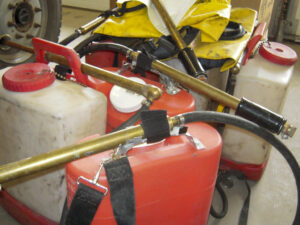
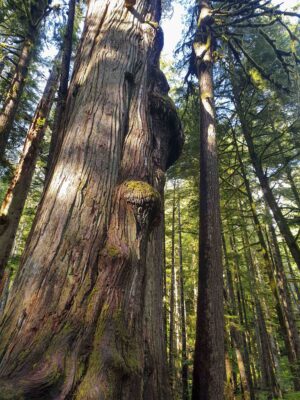
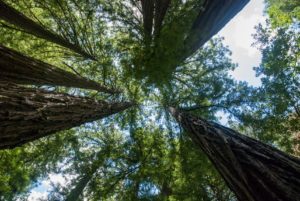

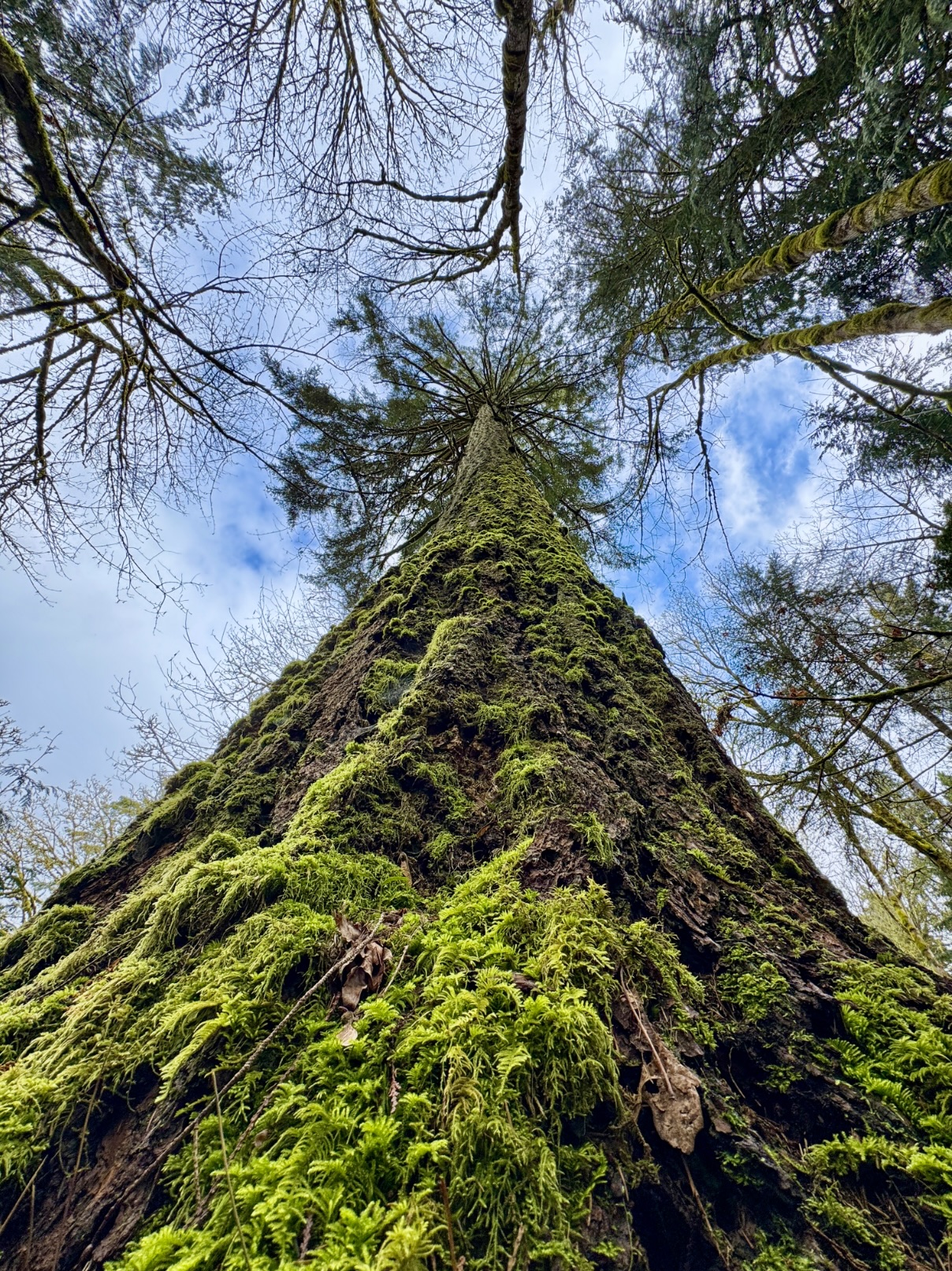 A B.C. Supreme Court justice has ordered a group of people blocking a logging road in the Walbran Valley on southern Vancouver Island to stop. The decision to grant an injunction to Tsawak-qin Forestry Limited Partnership, a joint partnership between the Huu-ay-aht First Nations and Western Forest Products, alongside an enforcement order is expected to set the stage for the RCMP to remove people from the area. This fight over British Columbia’s old-growth forests comes four years after the start of the historic Fairy Creek protests, where more than 1,100 people were arrested. The Walbran Valley blockade began in late August and has prevented a logging company from working and accessing tools, equipment and vehicles on the other side of the blockade. Pacheedaht Elder Bill Jones, who was at the forefront of the Fairy Creek protests, is one of the parties named in the court filing, and the only person to respond to the application.
A B.C. Supreme Court justice has ordered a group of people blocking a logging road in the Walbran Valley on southern Vancouver Island to stop. The decision to grant an injunction to Tsawak-qin Forestry Limited Partnership, a joint partnership between the Huu-ay-aht First Nations and Western Forest Products, alongside an enforcement order is expected to set the stage for the RCMP to remove people from the area. This fight over British Columbia’s old-growth forests comes four years after the start of the historic Fairy Creek protests, where more than 1,100 people were arrested. The Walbran Valley blockade began in late August and has prevented a logging company from working and accessing tools, equipment and vehicles on the other side of the blockade. Pacheedaht Elder Bill Jones, who was at the forefront of the Fairy Creek protests, is one of the parties named in the court filing, and the only person to respond to the application. 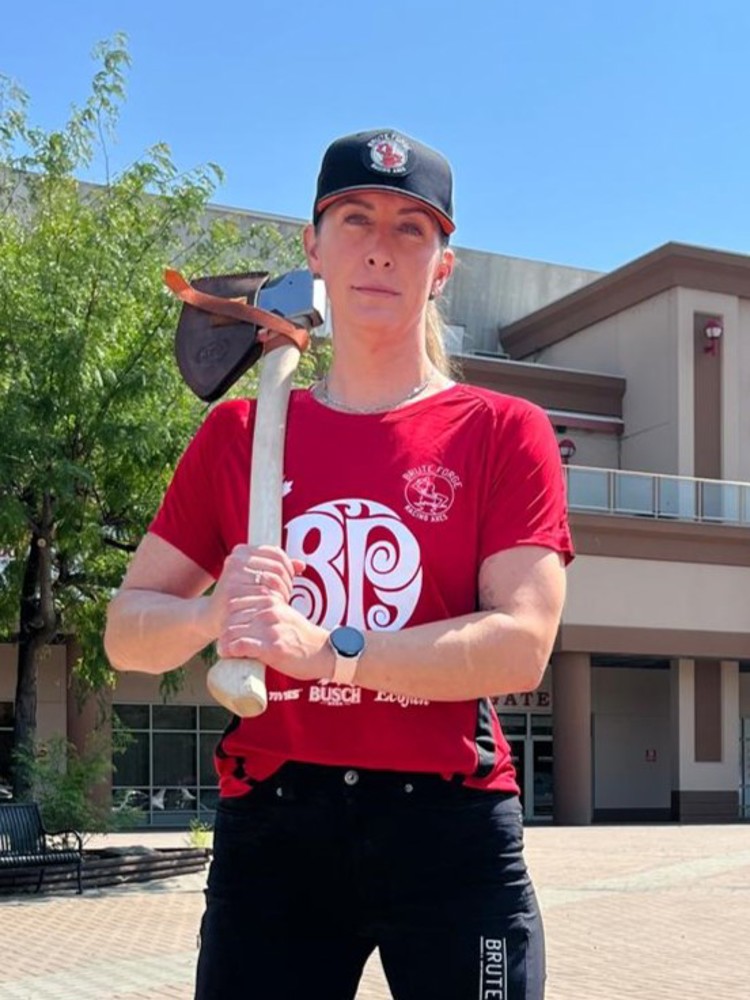
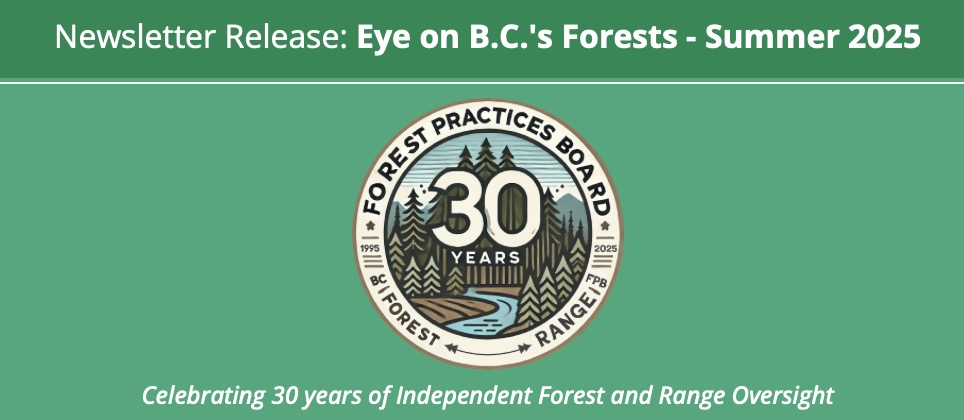 As summer winds down, I’m pleased to welcome you to this special edition of the Forest Practices Board’s newsletter. This season marks a significant milestone for us—our 30th anniversary. For three decades, the Board has worked diligently to provide independent oversight of forest and range practices in British Columbia, helping to ensure that our natural resources are managed sustainably and in the public interest. …This issue highlights some of the conversations, initiatives, audits, investigations and special reports the Board is involved in as we embark on this anniversary year.
As summer winds down, I’m pleased to welcome you to this special edition of the Forest Practices Board’s newsletter. This season marks a significant milestone for us—our 30th anniversary. For three decades, the Board has worked diligently to provide independent oversight of forest and range practices in British Columbia, helping to ensure that our natural resources are managed sustainably and in the public interest. …This issue highlights some of the conversations, initiatives, audits, investigations and special reports the Board is involved in as we embark on this anniversary year.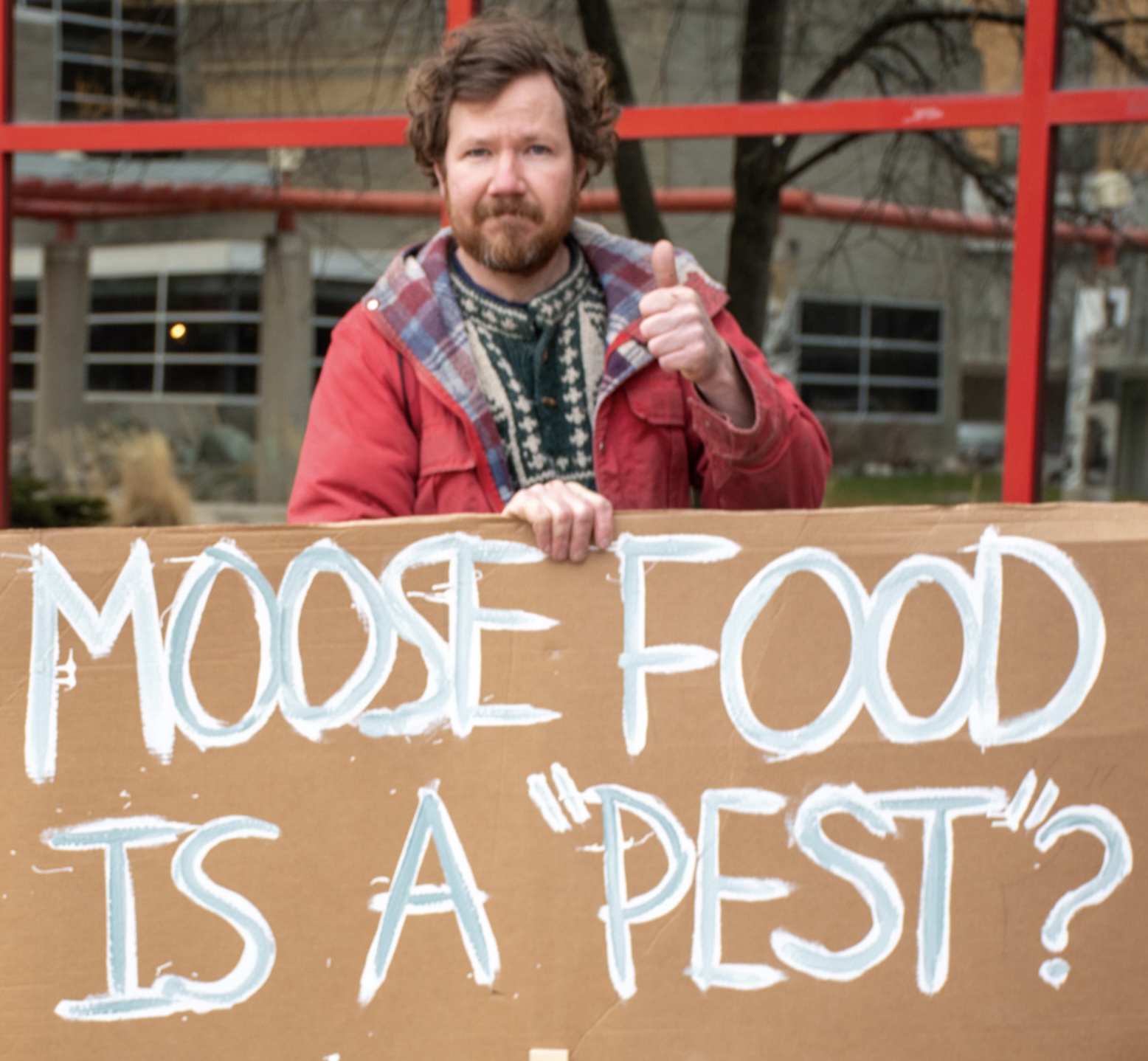
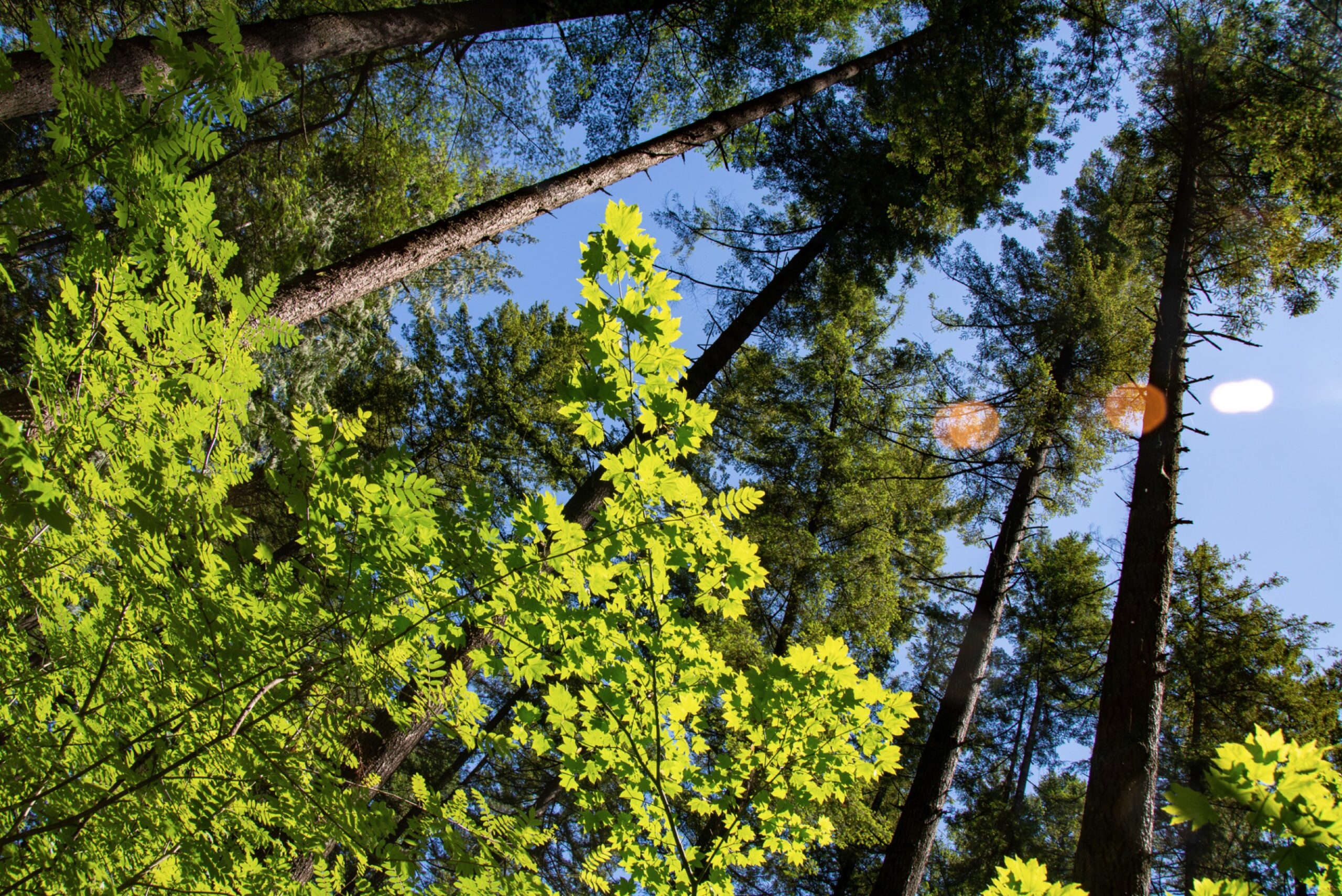 The Cariboo Wood Innovation Training Hub (CWITH) is inviting people to bring their ideas and opinions to an upcoming workshop on contemplative forestry. The workshop will be facilitated by Jason Brown, an affiliate forest professional with Forest Professionals British Columbia, on Saturday, Sept. 20. Participants will explore the concept of contemplative forestry, an approach which meets two extreme views on forestry in the middle. …Stephanie Huska, project lead with CWITH, said the workshop is a way to open the door to conversations which historically have not been included in natural resource management discussions based on western worldviews. …A contemplative approach to forest management values manual work as a form of spiritual practice, allows forests to ‘speak’ for themselves, admits there are some aspects of life we don’t have the language for and sees forestry as a mutually beneficial, place-based vocation.
The Cariboo Wood Innovation Training Hub (CWITH) is inviting people to bring their ideas and opinions to an upcoming workshop on contemplative forestry. The workshop will be facilitated by Jason Brown, an affiliate forest professional with Forest Professionals British Columbia, on Saturday, Sept. 20. Participants will explore the concept of contemplative forestry, an approach which meets two extreme views on forestry in the middle. …Stephanie Huska, project lead with CWITH, said the workshop is a way to open the door to conversations which historically have not been included in natural resource management discussions based on western worldviews. …A contemplative approach to forest management values manual work as a form of spiritual practice, allows forests to ‘speak’ for themselves, admits there are some aspects of life we don’t have the language for and sees forestry as a mutually beneficial, place-based vocation.
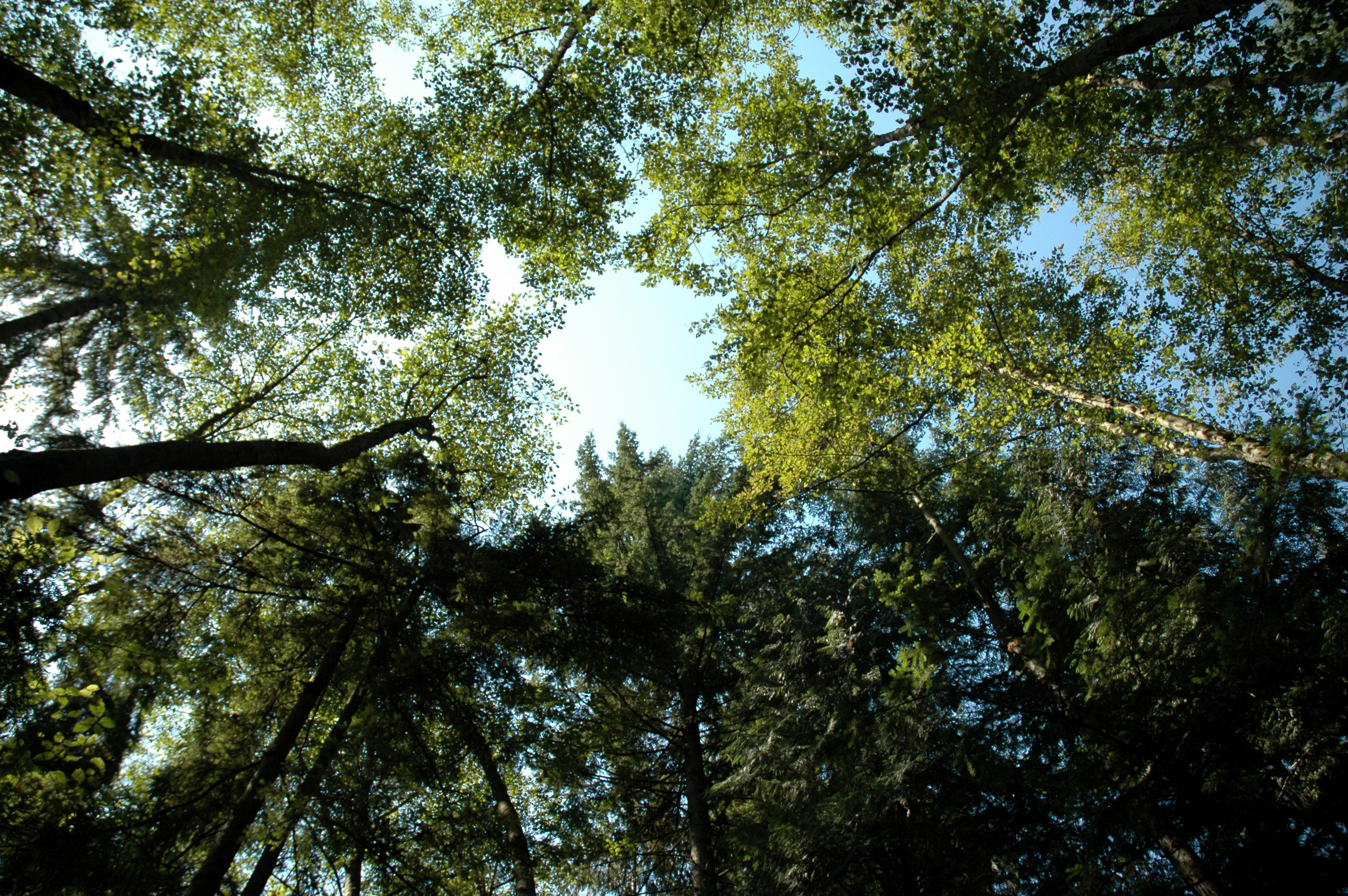 VANCOUVER — The B.C. Supreme Court is set to rule on an injunction to halt a blockade against old-growth logging in the Walbran Valley on Vancouver Island, but a lawyer for one of the blockaders says the law is evolving and in need of a “course correction.” The Pacheedaht First Nation has decried the blockade on its traditional territory near Port Renfrew, B.C., claiming it is undermining its authority and should disband. The First Nation said in a statement that forestry is a “cornerstone” of its economy, and is calling for the blockaders to “stand down and leave.” The statement came after Tsawak-qin Forestry Inc., a firm co-owned by the Huu-ay-aht First Nations and Western Forest Products Inc., filed a lawsuit last week in B.C. Supreme Court alleging that “a group of largely unknown individuals” began the blockade of a road on Aug. 25.
VANCOUVER — The B.C. Supreme Court is set to rule on an injunction to halt a blockade against old-growth logging in the Walbran Valley on Vancouver Island, but a lawyer for one of the blockaders says the law is evolving and in need of a “course correction.” The Pacheedaht First Nation has decried the blockade on its traditional territory near Port Renfrew, B.C., claiming it is undermining its authority and should disband. The First Nation said in a statement that forestry is a “cornerstone” of its economy, and is calling for the blockaders to “stand down and leave.” The statement came after Tsawak-qin Forestry Inc., a firm co-owned by the Huu-ay-aht First Nations and Western Forest Products Inc., filed a lawsuit last week in B.C. Supreme Court alleging that “a group of largely unknown individuals” began the blockade of a road on Aug. 25. Researchers from Trent University are immersing themselves in forests and streams in northwestern Ontario to understand how forestry practices and climate change affect brook trout populations and freshwater ecosystems. The team is working in the Walkinshaw and Wolf watersheds, northeast of Thunder Bay. They are focusing on headwater streams, which are small rivers that feed larger waterways across the Great Lakes. “Northern freshwater ecosystems are currently experiencing major disturbances, two of which are forest harvest and climate change. One of the effects of climate change is an increase in water temperatures. And the consequences of these predicted increased temperatures on the stream ecosystem are still unclear,” said PhD student Celeste Milli, who is leading the fieldwork. …Milli said the research could help inform science-based policy decisions in Canada’s northern forests, ensuring that both forest ecosystems and freshwater resources remain resilient in a changing climate.
Researchers from Trent University are immersing themselves in forests and streams in northwestern Ontario to understand how forestry practices and climate change affect brook trout populations and freshwater ecosystems. The team is working in the Walkinshaw and Wolf watersheds, northeast of Thunder Bay. They are focusing on headwater streams, which are small rivers that feed larger waterways across the Great Lakes. “Northern freshwater ecosystems are currently experiencing major disturbances, two of which are forest harvest and climate change. One of the effects of climate change is an increase in water temperatures. And the consequences of these predicted increased temperatures on the stream ecosystem are still unclear,” said PhD student Celeste Milli, who is leading the fieldwork. …Milli said the research could help inform science-based policy decisions in Canada’s northern forests, ensuring that both forest ecosystems and freshwater resources remain resilient in a changing climate.

